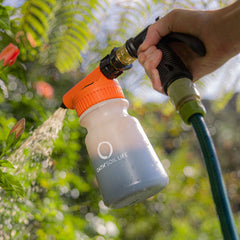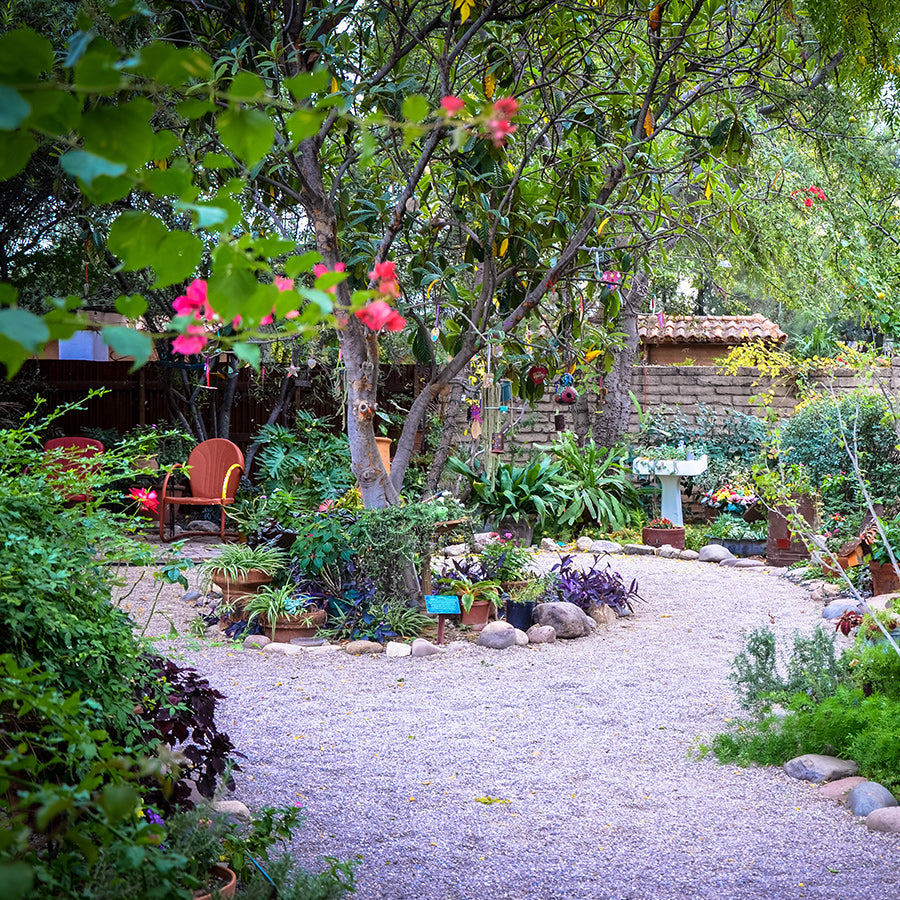Case Study
Tucson Botanical Gardens
Ranked fourth best botanical garden by USA Today. Tucson Botanical Gardens implemented the Oath Soil Life system with tremendous results.
Several years ago, the Gardens confronted the task of selecting an arborist to address tree safety concerns. EnviroCare Tree Solutions was chosen, a decision informed by their focus on holistic tree care and soil health. They emphasized soil amendments before pruning, benefiting overall tree health and storm resilience. The comprehensive plan included systematic tree feeding with Oath Soil Life —applied to all pruned trees and select distressed specimens within the collection. The Oath Soil Life product consists of a rhizobacterial inoculant with over a hundred strains that thrive on root exudates — fluids containing atmospheric carbon. These rhizobacteria metabolize root exudates, generating various metabolites, including enzymes and organic acids that enhance mineral absorption and water retention. The presence of healthy rhizobacteria prevents the accumulation of root exudates that may hinder plant growth.
One year later, we observed remarkable improvements in treated trees’ health, evident in increased new growth and healthier leaf pigmentation. Especially noteworthy was the response of previously distressed trees, indicating a revitalized immune system and enhanced vascular health, though those benefits were not visually apparent. Given these promising results, a scientific inquiry was undertaken in collaboration with Oath Inc. co-founder Peter Saavedra. A comparative analysis was conducted on independent laboratories. The results were illuminating. All treated trees exhibited improved leaf tissue nutrient levels, featuring elevated nitrogen, potassium, phosphorus, sulfur, magnesium, and iron concentrations — critical for chlorophyll synthesis. Tests also revealed a 90% increase in water retention and holding capacity in treated soil.
These finding have substantial implications. Healthier plants require fewer amendments and reducing costs. After a full course of treatments in the summer, fall and winter, we noticed fuller and longer blooms in the spring, with more robust new growth and deeper color in the foliage. Going into the heat of summer, our treated beds are showing more drought resistance and fewer signs of heat stress. Increased water retention reduces the need for supplementary irrigation and supports the capture and retention of rainfall, benefiting plants with limited or no irrigation. Moreover, the heightened organic carbon content not only promotes water retention but also aids in sequestering atmospheric carbon, mitigating its role as a greenhouse gas and mitigating climate change.
I’m consistently hearing: “The gardens have never been more vibrant, and the grounds have never been greener.”
Adam Farrell-Wortman
Director of Horticulture at Tucson Botanical Gardens


